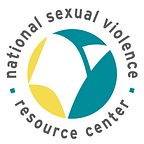Fire Emojis: Queerness and Online (sexual) Harassment
by christian scott martone donde
It all started with the ‘fire emojis’ on Instagram.
I would post a selfie or a somewhat intimate story, and a couple of minutes or hours later, I would get the fire emojis. In other words: Hottie. Cutie. Babe.
And I mean, isn’t it amazing to get attention and a digitally mediated dopamine shot? To be desired? Well actually not so, I realized. Not always, at least. The particular situation/context matters. The who, the what, the how. You know?
Flirting is a big part of everyone’s lives. Most of us are longing for connection and intimacy — in the myriad of forms it can take — and since a big chunk of our lives are lived in digital arenas and spaces, it is only to be expected that online flirting will take place in social media.
And while not a dating app per se, Instagram has definitely become a place to meet people, flirt, connect, collaborate, and sometimes hook up. The perfect arena for networked intimacy — to borrow the concept that researchers Hobbs, Owen, and Gerber use when talking about “flirting, courtship and the ongoing search for love and fulfillment via dating apps and smartphones.”
Digital flirting on social media can soon lead to disclosing feelings and intentions of desire, proposing and scheduling dates, sharing needs and boundaries — a beautiful pathway of consent and intention. The possibility of making new lovers and friends. Though, it can also take scary turns and cross the line, becoming an experience of online harassment.
What happens when, even after drawing a boundary or expressing a lack of interest, those big red fire emojis keep coming from the particular individual? Or when the emojis become unsolicited propositions, pushy invitations, discriminatory slurs, and whatnots When reporting and blocking is not enough?
Online harassment is a real thing that many of us have experienced. According to the Pew Research Center’s 2021 report on The State of Online Harassment, one out of four US adults have experienced severe online harassment, most of it taking place in social media. The same report cites that, unsurprisingly, most Americans (79%) believe that social media companies are doing a poor job in tackling the issue.
However, the Pew Research Center speaks mostly of men and women in their research, utilizing a binary framework that limits our understanding of the queer experience (I will be using the notion of queer to encapsulate all gender and sexual identities that are not cis/hetero). In other words, my experience.
As complex as it already is, online harassment is experienced more by marginalized groups like women, queer folks, disabled folks, Indigenous and Black people, and immigrants.
In their systemic literature review on cyberbullying and LGBTQ youth, Abreu and Kenny conclude that LGBTQ youth are cyberbullied (harassed) at higher rates than cis and heterosexual individuals, causing psychological and behavioral effects.
This result is confirmed by GLSEN’s “Out Online: The Experiences of LGBT Youth on the Internet” 2013 report. Notably, the report shows that queer youth are four times as likely to be sexually harassed online, and that one in three respondents had been sexually harassed online in the past year alone.
These reports paint a grim picture of numbers and percentages that reflect the lived experiences of my queer community; the stories, anecdotes, and traumas that my friends share with me in parties, university classrooms, and Instagram DMs.
Let’s return to the unsolicited fire emojis. So what to do about this?
While we wait for institutional public policy to make online worlds safer, or for social media companies to take the issue seriously, there are many things at the community level that can support folks experiencing online harassment, including sexual harassment.
Several online resources are available, often a Google search away. HeartMob, a global, people-powered movement to end harassment, has compiled an extraordinary list of organizational resources to assist folks from various communities experiencing online harassment.
Alternatively, for those looking for peer support and a safe space to discuss lived experiences, online communities like TrevorSpace can be of help.
And my personal favorite: Talk to your friends (and/or a therapist). Share, vent, ask for feedback (or a hug), send super-long voice notes, scream/cry, dance it off — and remember you’re not alone on this.
christian scott martone donde is an artist, researcher, and designer. They are the co-founder of Mutual Design, and a PhD student at Concordia University. They have worked on projects intersecting cities, community, sustainability, accessibility, pedagogy, games, and technology. You can find them online at www.christianscott.ca or @urbanosapiens.
